
The NES Zapper, also known as the Video Shooting Series light gun in Japan, is an electronic light gun accessory for the Nintendo Entertainment System (NES) and the Japanese Famicom. It was released in Japan for the Famicom on February 18, 1984, and launched alongside the NES in North America in October 1985.

R.O.B. is a toy robot accessory for the Nintendo Entertainment System (NES). It was launched in July 1985 as the Family Computer Robot in Japan, and October 1985 as R.O.B. in North America. Its short lifespan yielded only two games in the Robot Series: Gyromite and Stack-Up.

Robot Odyssey is a programming game developed by Mike Wallace and Dr. Leslie Grimm and published by The Learning Company in December 1984. It was released for the Apple II, TRS-80 Color Computer, and MS-DOS. Most players have found it challenging. The player is readying for bed when, suddenly, they fall through the floor into an underground city of robots, Robotropolis. The player begins in the sewers of the city with three programmable robots, and must make their way to the top of the city to try to find their way home again.
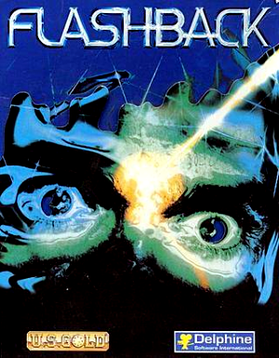
Flashback, released as Flashback: The Quest for Identity in the United States, is a 1992 science fiction cinematic platform game developed by Delphine Software of France and published by U.S. Gold in the United States and Europe, and Sunsoft in Japan.

Rescue Rover is a puzzle video game that was developed by id Software and published by Softdisk in 1991. The game was distributed as shareware, with the first 10 levels making up the shareware version, and another 20 levels being present in the registered version. This is one of several games written by id to fulfil their contractual obligation to produce games for Softdisk, where the id founders had been employed. A sequel, Rescue Rover 2, followed.

The Sentinel, released in the United States as The Sentry, is a puzzle video game created by Geoff Crammond, published by Firebird in 1986 for the BBC Micro and converted to the Commodore 64, Amstrad CPC, ZX Spectrum, Atari ST, Amiga and IBM PC compatibles. The Sentinel was among the first games to use solid-filled 3D graphics on home computers. It won numerous awards upon release and has since appeared on several "best video games of all time" lists.
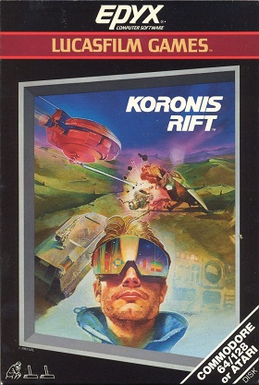
Koronis Rift is a 1985 computer game from Lucasfilm Games. It was produced and designed by Noah Falstein. Originally developed for the Atari 8-bit family and the Commodore 64, Koronis Rift was ported to the Amstrad CPC, Apple II, MSX2, Tandy Color Computer 3, and ZX Spectrum.

Tau Ceti is a video game published in 1985 by CRL for the ZX Spectrum and converted to the Amstrad CPC, Amstrad PCW, Atari ST, Commodore 64, and MS-DOS. It was designed and programmed by Pete Cooke. The world, set on Tau Ceti III orbiting Tau Ceti, is displayed using 3D graphics with shadow effects. The planet has a day and night cycle.
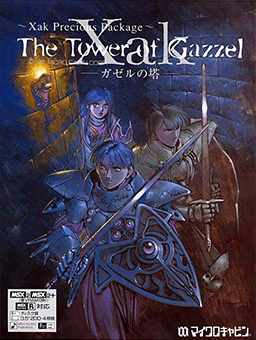
Xak Precious Package: The Tower of Gazzel is a fantasy role-playing video game developed and published by the Japanese software developer MicroCabin. The game is a direct sequel to Xak: The Art of Visual Stage and Xak II: The Rising of the Red Moon. While technically being the third installment of the series, The Tower of Gazzel is a sidestory taking place between the events of Xak II and Xak III. The game was released in Japan only.
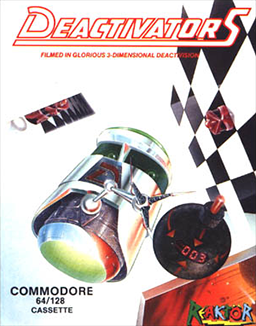
Deactivators is a 1986 puzzle video game designed by David Bishop and Chris Palmer, developed by Tigress Marketing and System Software, and published by Ariolasoft's action game imprint Reaktor. The player controls bomb disposal robots known as deactivators and must use them to deactivate bombs planted by terrorists in five research complexes. The concept for the game came from a brainstorming session between Bishop and Palmer; its design and development took five to six months to complete. It was released for the Amstrad CPC 464, Commodore 64, and ZX Spectrum platforms in October 1986.
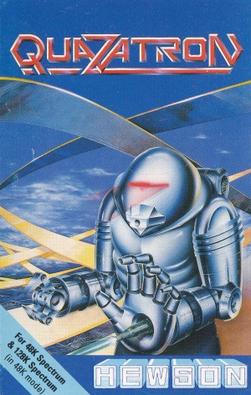
Quazatron is an action game developed by Graftgold, and released in 1986 by Hewson Consultants. It was designed by Steve Turner for the ZX Spectrum.

Obsidian is an action-adventure computer game for the Amstrad CPC personal computer published by Artic Computing in 1986. The game is set on the titular space station located within the centre of an asteroid, which is out of control and drifting towards a black hole. The player must guide an astronaut with a jet pack around the station and re-activate its engine shields to prevent the Obsidian's destruction. This involves collecting items and using them to solve puzzles, while avoiding the Obsidian's reactivated security systems.

PQ2: Practical Intelligence Quotient 2 is a puzzle game for the PlayStation Portable, and a sequel to PQ: Practical Intelligence Quotient. The game is based on testing the model of human intelligence developed by Dr. Masuo Koyasu at Kyoto University.

Deflektor is a puzzle game developed by Vortex Software and published by Gremlin Graphics in December 1987. The game was followed by a sequel in 1989 called Mindbender.

kiki the nano bot is an open-source puzzle video game designed by Thorsten Kohnhorst and first released in 2005. It is a mixture of the games Sokoban and Kula World. It is available for Microsoft Windows, Linux, FreeBSD and Mac OS X.
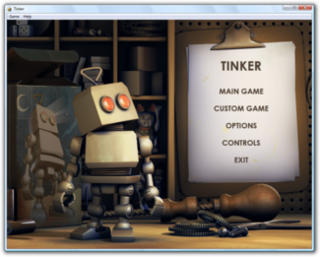
Tinker, also known as Microsoft Tinker, is a puzzle video game developed by Fuel Industries in which the player controls a robot through various mazes and obstacle courses. It was originally released on September 23, 2008 as part of Windows Ultimate Extras, and contained 60 levels including a 20-level tutorial. A free map editor was also released, however it is not compatible with the Games for Windows – Live version of Tinker. It is only compatible with the Windows Ultimate Extras version.
Temporal is a freeware videogame featuring platform and puzzle elements. The game was created by Israeli developer Oren Bartal using the Allegro library.
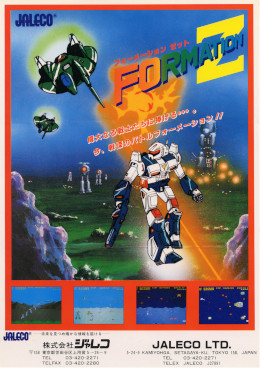
Formation Z is a 1984 horizontally scrolling shooter developed and published by Jaleco. The arcade release was distributed by Williams and known as Aeroboto outside Japan. It was later ported to the MSX and to the Famicom, the latter being included as part of Jaleco Collection Vol. 1 for the PlayStation. More recently the Famicom version of the game was made downloadable via the Wii's Virtual Console download service in Japan.

Zarathrusta is a 1991 multidirectional shooter developed by Belgian video game developer The Whiz Kidz and published by Hewson Consultants for the Amiga. Written by Peter Verswyvelen and with graphics by Erlend Robaye, the game is inspired by the 1986 video game Thrust. Their goal was to create a 16-bit version of Thrust's gameplay, with more levels, enhanced graphics and improved features. The game's name is a portmanteau between "Zarathustra" and "Thrust".

Xenocide is a scrolling shooter for the Apple IIGS written by Pangea Software and published by Micro Revelations in 1989. An IBM PC compatible port using VGA graphics was developed by Manley & Associates and published in 1990. The box cover credits Brian Greenstone as the game's creator on both versions. Xenocide was the first commercially published game from Greenstone's company, Panega Software.




















